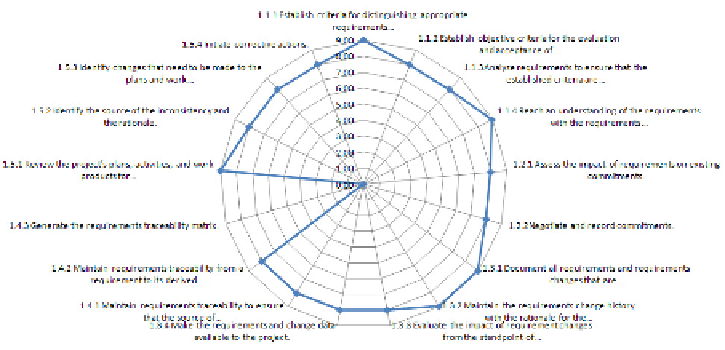Hardware Reference
In-Depth Information
Fig. 4.
REQM - SG1 Manage Requirements
changes quickly. As the project progressive, historical data of previous sprints
were collected and used in order to estimate effort and cost.
Figure 3 shows the results of the appraisal for PMC process area. Subpractices
for SG1 are largely satisfied because the Scrum lifecycle defines explicitly times
for monitoring and control through daily, review, and retrospective meetings.
Finally Figure 4 shows the results of the appraisal for REQM process area.
Subpractices for SG1 are largely satisfied. Customers must not specify most of
the requirement at the project beginning, so understanding of requirements is
easier through iterative sprints and requirements change processes are flexible
and largely supported by Scrum method.
5 Conclusions and Further Work
Agile methodologies are associated commonly to informal and lightweight doc-
umentation that do not emphasize process definition or measurement to the
degree that models such as the CMMI do. However the literature has proved
that CMMI model can be applied in a lightweight manner without incurring in
excessive documentation. In particular, this paper has proved that Scrum pro-
cesses can be considered valid under the CMMI paradigm. So, the appraisal has
provided evidences that those process areas related to CMMI-DEV level 2 were
largely covered. These results will be used for learning and selecting practices
for the following agile projects.
The conclusion is that agile methodologies provide many good engineering
practices, and together with CMMI, both approaches can achieve very positive
synergies. Since Scrum method provides criteria to identify a minimum set of
good practices to achieve CMMI capability level 2, small-medium organizations
can take advantage of more flexible and lightweight methods to achieve a certain
CMMI level compliance.

